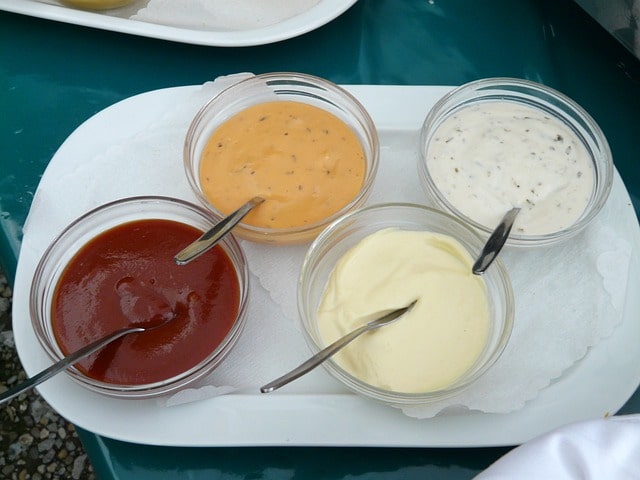The Ultimate Guide: How to Make Organic Mayonnaise from Scratch
Introduction to making organic mayonnaise from scratch
When it comes to condiments, mayonnaise is a staple in many households. While store-bought mayonnaise is convenient, making your own organic mayonnaise from scratch not only gives you control over the quality of ingredients, but also allows you to create a healthier and more flavorful alternative. In this ultimate guide, I will take you through the step-by-step process of making organic mayonnaise, from choosing the right ingredients to storing and preserving the final product.
Why choose organic ingredients for your homemade mayo
Using organic ingredients in your homemade mayonnaise ensures that you are avoiding harmful pesticides, synthetic fertilizers, and genetically modified organisms (GMOs). Organic eggs, for example, come from hens that are raised without antibiotics or hormones and have access to outdoor spaces. Organic oils, such as cold-pressed olive oil or avocado oil, are free from chemical processing and retain their natural nutrients. By opting for organic ingredients, you are not only promoting your own well-being but also supporting sustainable farming practices.
Essential tools and ingredients for making organic mayonnaise
Before diving into the process of making organic mayonnaise, it’s important to gather the necessary tools and ingredients. Here’s what you’ll need:
Organic egg yolks: Separate the yolks from the whites and ensure that the eggs are fresh and of high quality.
Organic oil: Choose a neutral-tasting oil, such as organic sunflower oil or safflower oil, or experiment with flavorful options like organic extra virgin olive oil or organic avocado oil.
Organic mustard: This acts as an emulsifier and adds a tangy flavor to the mayonnaise. Opt for organic Dijon mustard or organic yellow mustard.
Organic lemon juice or vinegar: Adding acidity helps stabilize the mayonnaise. Use freshly squeezed organic lemon juice or organic apple cider vinegar.
Salt and pepper: Season the mayonnaise to taste with organic sea salt and freshly ground organic black pepper.
In terms of tools, you will need a mixing bowl, a whisk or an immersion blender, and a jar or an airtight container for storage. With these essentials in place, you are ready to embark on your homemade organic mayonnaise journey.
Step-by-step guide on making organic mayonnaise
- Start by placing the organic egg yolks in a mixing bowl and whisking them until they become creamy and pale in color.
- Gradually add the organic oil, a few drops at a time, while whisking vigorously. This process is crucial to achieve the desired emulsification. As the mixture thickens, you can start adding the oil in a slow, steady stream.
- Once you have incorporated all the oil, add a teaspoon of organic mustard and a tablespoon of organic lemon juice or vinegar. Whisk until well combined.
- Season the mayonnaise with organic sea salt and freshly ground organic black pepper, adjusting the flavors to suit your taste.
- Transfer the homemade organic mayonnaise to a jar or an airtight container and refrigerate for at least an hour before using. This allows the flavors to meld and the mayonnaise to thicken.
Tips for achieving the perfect consistency and flavor
Making mayonnaise from scratch can be a delicate process, but with a few tips, you can ensure a smooth and delicious outcome.
Use room temperature ingredients: Allowing your organic eggs and other ingredients to come to room temperature before starting the process helps with emulsification and ensures a smoother texture.
Whisk or blend slowly: Take your time when adding the organic oil to the egg yolks. Slow, steady whisking or blending allows for proper emulsification and creates a creamy consistency.
Experiment with flavors: Once you have mastered the basic mayonnaise recipe, don’t be afraid to get creative. Add minced garlic, fresh herbs, or even a touch of organic honey to elevate the flavor profile of your homemade organic mayo.
Adjust the thickness: If your mayonnaise turns out too thin, you can thicken it by slowly whisking in a little more oil. On the other hand, if it becomes too thick, you can add a splash of organic lemon juice or vinegar to thin it out.
Variations and flavor enhancements for homemade organic mayo
One of the joys of making your own organic mayonnaise is the ability to customize it to suit your taste preferences. Here are a few variations and flavor enhancements to consider:
Chipotle mayo: Add a teaspoon of pureed chipotle peppers in adobo sauce for a smoky and spicy kick.
Herb-infused mayo: Mix in finely chopped fresh herbs like basil, dill, or parsley for a burst of freshness.
Garlic aioli: Crush a clove or two of organic garlic and whisk it into your mayonnaise for a flavorful garlic aioli.
Lemon dill mayo: Stir in freshly grated lemon zest and chopped dill to brighten up your mayo and pair it perfectly with seafood.
Feel free to experiment with different ingredients and measurements to find your own signature flavor combination.
Storing and preserving organic mayonnaise
To ensure the longevity and freshness of your homemade organic mayonnaise, proper storage is key. Here are some guidelines to follow:
Store in the refrigerator: Organic mayonnaise should always be stored in the refrigerator to prevent spoilage and maintain its quality. A temperature between 35°F and 40°F (2°C and 4°C) is ideal.
Use airtight containers: Transfer your homemade mayo to a clean, airtight jar or container to keep out moisture and odors.
Check for signs of spoilage: Keep an eye on your mayonnaise for any changes in texture, color, or smell. If it becomes watery, separates, or develops an off smell, it’s time to discard it.
With proper storage, your homemade organic mayonnaise can last for up to two weeks, although it is best consumed within the first week.
Health benefits of organic mayonnaise
While mayonnaise has often been criticized for its high fat content, making your own organic mayonnaise allows you to control the quality of ingredients, making it a healthier option. Here are some potential health benefits of organic mayonnaise:
Healthy fats: Organic mayonnaise made with high-quality oils, such as olive oil or avocado oil, provides beneficial monounsaturated fats that can support heart health and reduce inflammation.
Nutrient-rich eggs: Organic eggs are packed with essential nutrients like vitamins A, D, E, and B12, as well as minerals like selenium and choline.
No artificial additives: By making your own organic mayo, you can avoid preservatives, artificial flavors, and unhealthy trans fats that are often found in store-bought versions.
While organic mayonnaise is a healthier alternative, it’s important to consume it in moderation as part of a balanced diet.
Frequently asked questions about making organic mayonnaise
- Can I use a different type of oil? While the traditional choice for mayonnaise is vegetable oil, you can experiment with other organic oils such as avocado oil, olive oil, or even coconut oil. Keep in mind that different oils may alter the flavor and consistency of your mayonnaise.
- Can I use pasteurized eggs? Pasteurized eggs can be used in place of fresh eggs if you have concerns about food safety. However, keep in mind that pasteurized eggs may produce a slightly different texture in your mayo.
- Can I make organic mayonnaise without mustard? Mustard acts as an emulsifier in mayonnaise, helping to stabilize the mixture. While you can omit mustard, your mayonnaise may have a different texture and may be more prone to separation.
- How long can I keep homemade organic mayonnaise? Homemade organic mayonnaise can be stored in the refrigerator for up to two weeks, although it is best consumed within the first week for optimal freshness.
Conclusion: Enjoying your homemade organic mayonnaise
Making your own organic mayonnaise from scratch is a rewarding and satisfying process. By choosing organic ingredients, you are not only promoting your well-being but also supporting sustainable farming practices. With the step-by-step guide, tips, and flavor variations provided in this ultimate guide, you have all the tools to create delicious and healthy organic mayo right in your own kitchen. So go ahead, whip up a batch, and enjoy the creamy goodness of homemade organic mayonnaise!
CTA: Try making your own organic mayonnaise today and experience the difference in taste and quality. Share your favorite variations and flavor combinations in the comments below!

